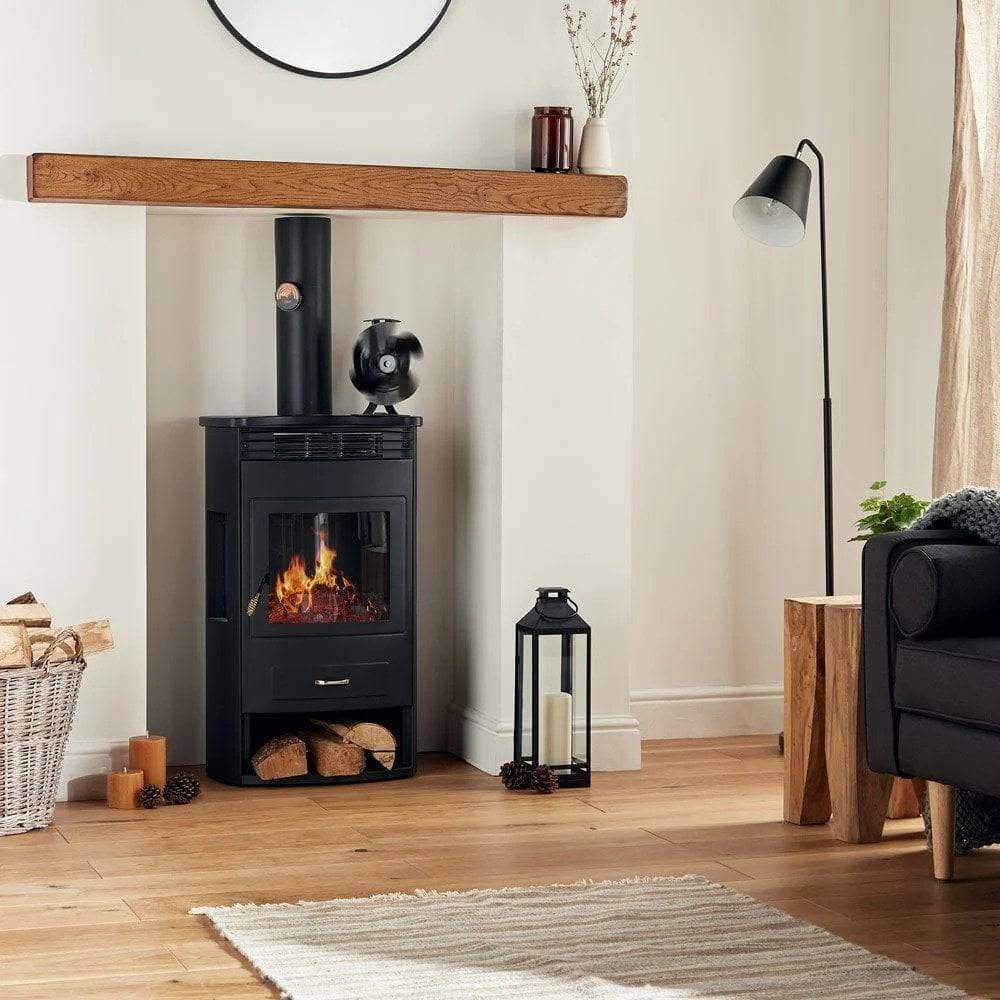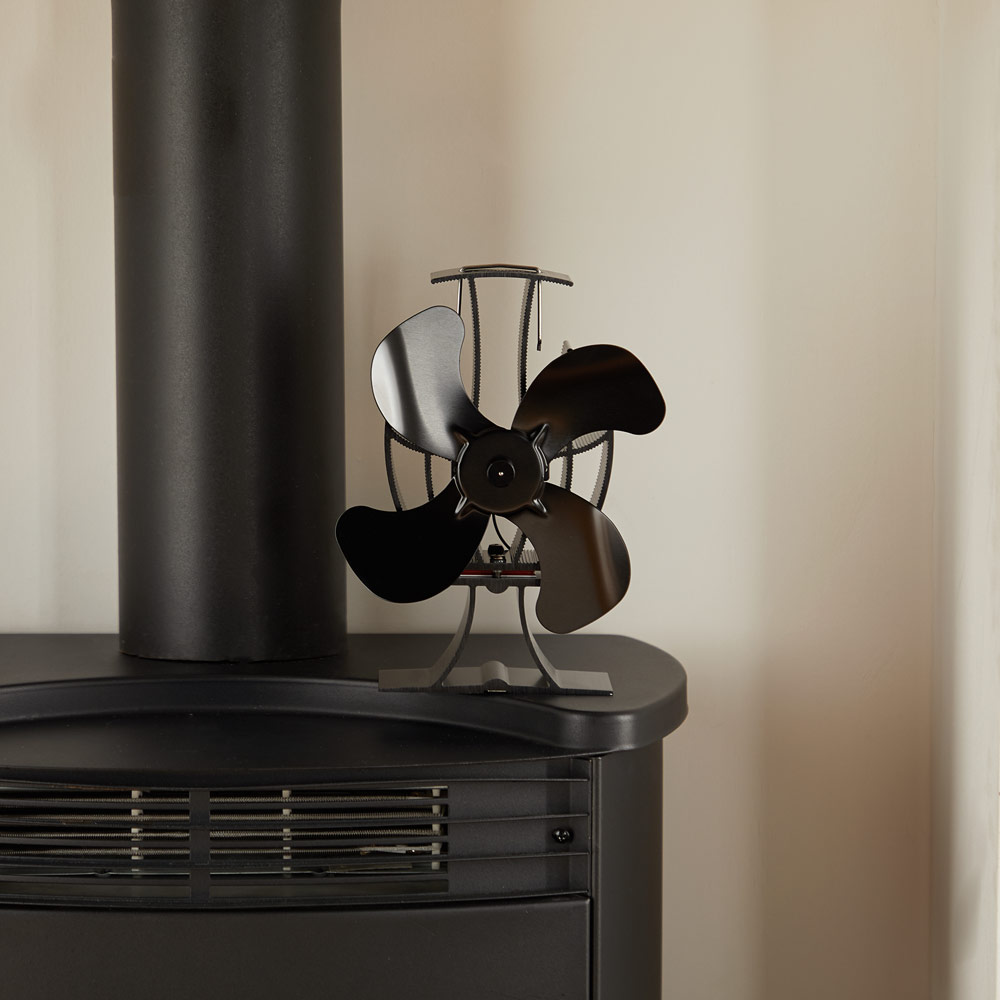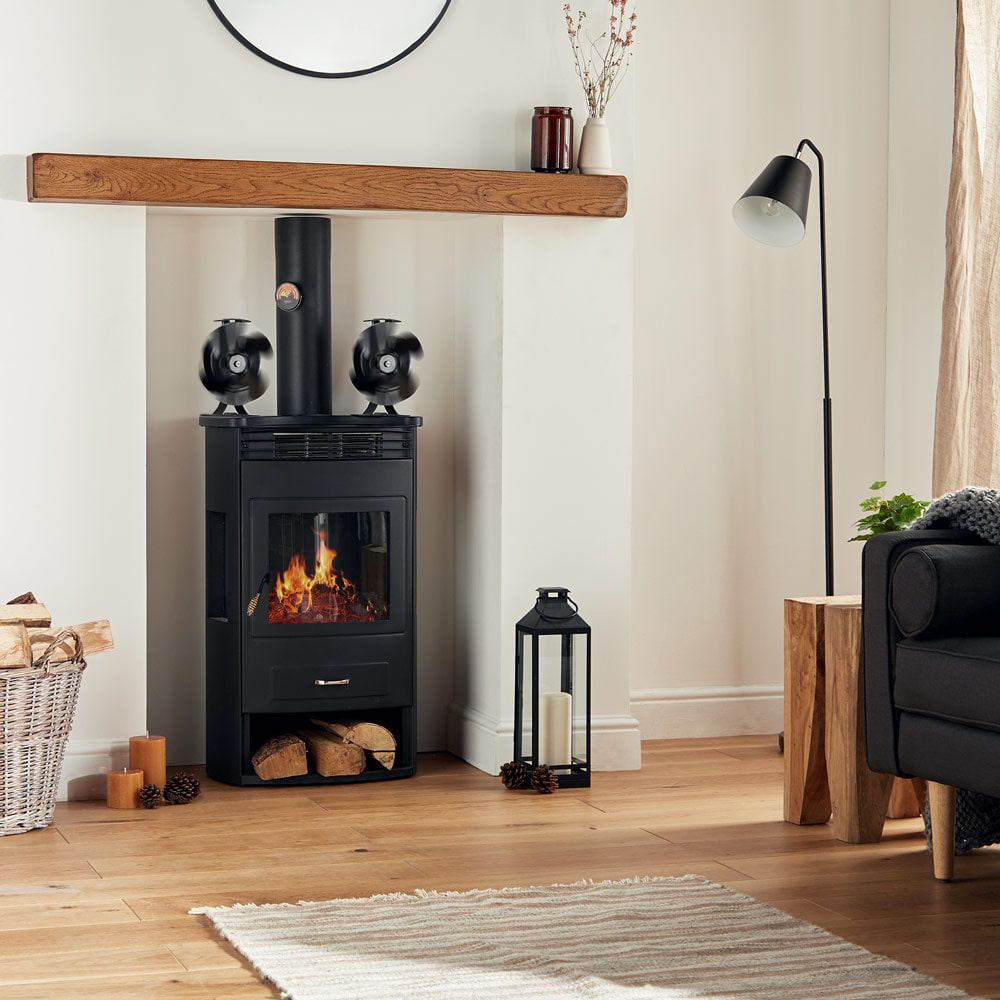Will a stove fan make your home warmer?


The central heating will keep you warm this winter – but it might burn a hole in your wallet.
Fortunately, there’s a nifty gadget that’ll heat your home for less with minimal effort: a stove fan.
Recycling wasted heat from your stove heater, stove fans are an eco-friendly alternative to traditional heaters and can help slash your energy bill this winter – win-win!
But we know what you’re thinking: how do stove fans work, are they safe, and how do you use a log burner?!
Don’t worry; we answer all these questions and more in this handy guide to stove fans.
Let’s dive in.
How do stove fans work?


Stove fans are powered by heat from a stove and blow warm air around a room. Nifty trick, but how do they do it?
Like this:
Heat travels up the fan’s conductive frame, making one side of the Peltier device hot and the other cool, thanks to its heat sink.
This thermal difference creates a voltage which powers the blades.
The fan takes in the cool air, heats it, and blows it out to warm your room.
Cosy, eco-friendly warmth; you can’t beat it.
Are stove fans effective at heating your home?
Yes, stove fans are a cheap, effective way to heat your home. They don’t require electricity and instantly boost your stove – no more pesky cold spots!
Are two stove fans better than one?


If you’re heating a large room, you might be better off with two stove fans (pointing at opposite ends of the room), but one is enough for smaller spaces.
Having said that, an extra stove fan will help eliminate cold spots in a smaller room. Best thing to do? Try one stove fan to determine whether you need another.
Where should you place a stove fan?
Pop your stove fan on the stove and face it in the direction you want warmth to radiate. The stove fan will turn on automatically and start heating your room right away.
Most people place their stove fan in the middle back of the stove to capture its rising heat.
Just make sure you leave enough room between the fan and the wall to allow the cooler air to enter – 15cm should do it.
One thing to remember – don’t place your stove fan in front of the stove’s flue pipe: it’s the hottest part of the stove.
Will a stove fan work on a radiator?
Stove fans do work on radiators, but we don’t recommend it. The unstable surface increases the likelihood of the fan falling on the floor.
Are stove fans safe?
Stove fans are safe; just follow these three guidelines:
1. Place it on an even surface
2. Don’t move it while it’s spinning
3. Wait for it to cool down before handling*
*You can check if the fan has cooled down with a stove thermometer (included with our 4-blade stove fan) or by holding your hands in front of the fan. If warmth still radiates, it hasn’t cooled down.
How long does a stove fan last?
Your stove fan will last for years if you look after it. Mileage may vary, though, as cheaper models often overheat and stop working.
To get the most out of your stove fan, use a thermometer to prevent overheating, and dust it once a month to keep it in tip-top shape.
All VonHaus stove fans have a 2-year warranty, so you can heat your home with 100% peace of mind.
How to choose a stove fan
Choosing a stove fan depends on the size of the room you’re heating. But as a rule of thumb: the bigger the room, the bigger the stove fan.
You’ll find the perfect model to suit your space in our stove fan range.
Are more blades better on a stove fan?
Stove fans with more blades are quiet with a weaker breeze, while stove fans with fewer blades are louder with a stronger breeze.
Don’t worry, though; stove fans are generally quiet, emitting a lower volume than the stove fan itself.
Other uses for stove fans
Aside from heating your home, you can use a stove fan to combat dry air – it’s super simple, too.
Fill a metal tray with water, place it in front of the fan, and the moisture will blow around your room once the water evaporates.
How to use a log burner


When discussing stove fans, it’s best to have a handle on how to use a log burner – it’s the power source, after all.
Here’s how to use a log burner:
Firstly, ensure you have a means of smoke extraction (e.g., a flue pipe or chimney).
Once that’s sorted, you’ll need to get the wood. We recommend wood with less than 20% moisture to limit smoke and particle emissions.
Burning these woods can produce harmful toxins:
|
Painted wood Poison Ivy, Poison Oak, etc. Christmas trees Driftwood Plywood, Particleboard, Fibreboard Wood pallets Cardboard |
You can use other types of wood, provided they’re dry and not green. Just make sure you season (chop and leave to dry for 3-12 months) and store it correctly.
Now you’re clued up on stove fans, why not head to our money-savers range to cut more costs this winter? From eco-friendly heaters to cut-price kitchenware, you’ll find everything you need to stay snug and well-fed this winter.
For more life hacks and handy how-to guides, check out our blog, and leave us a comment if you’d like to share any tips.
Until next time!



 Need help?
Need help?
